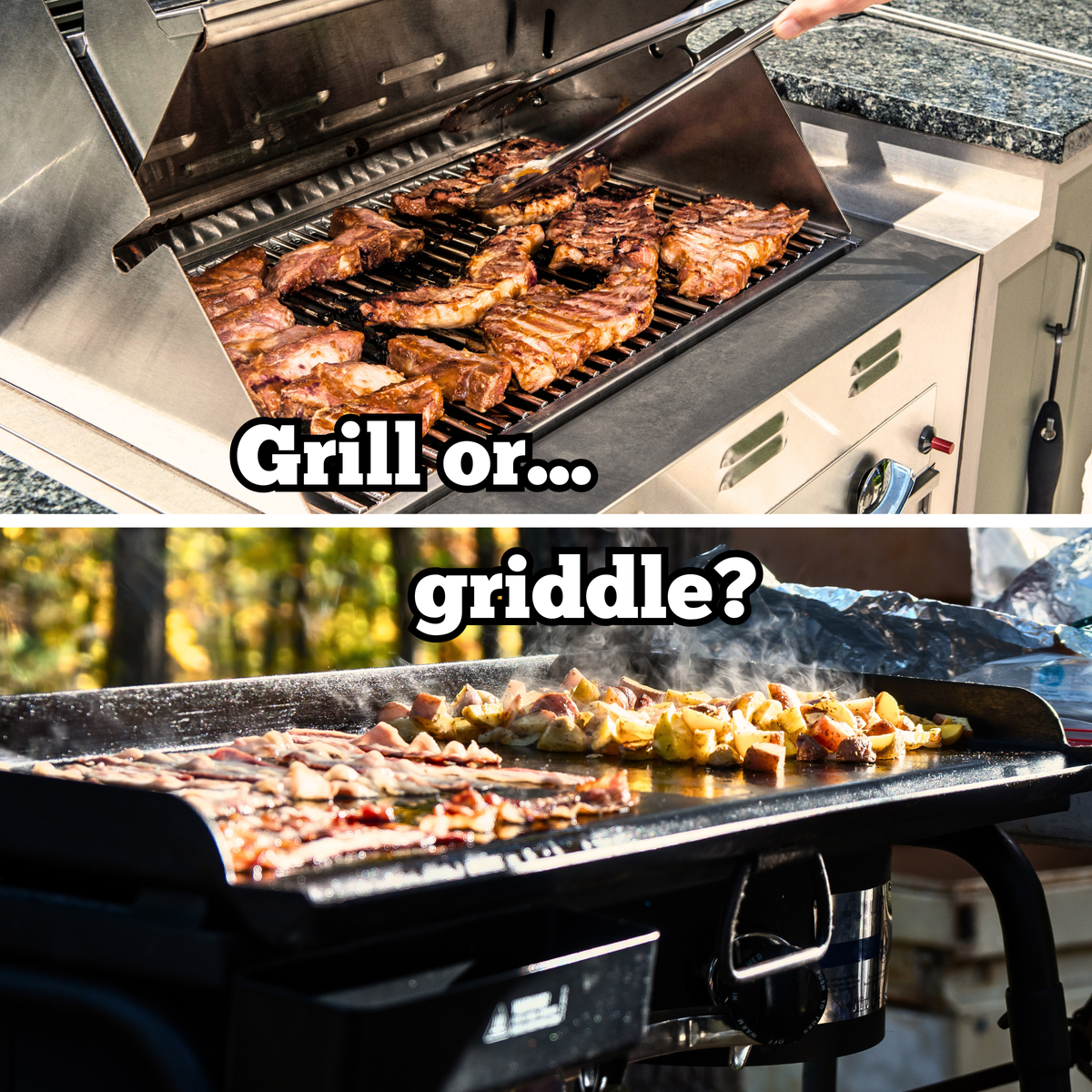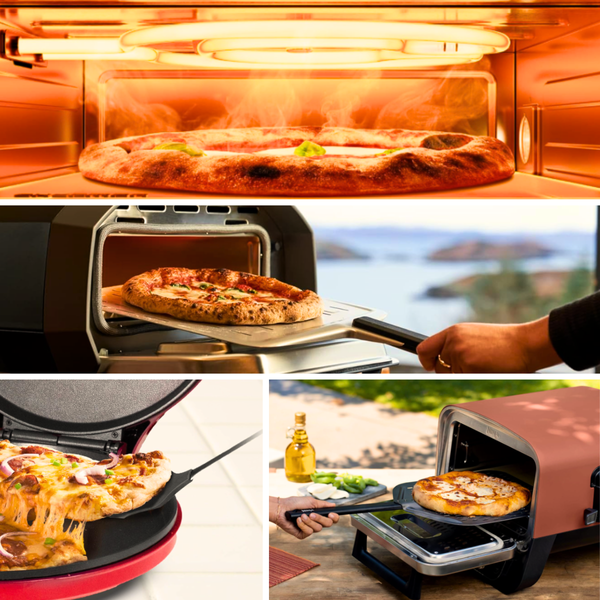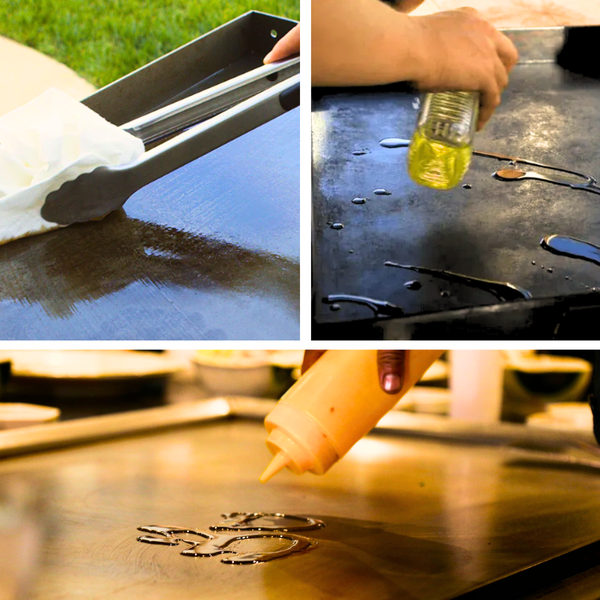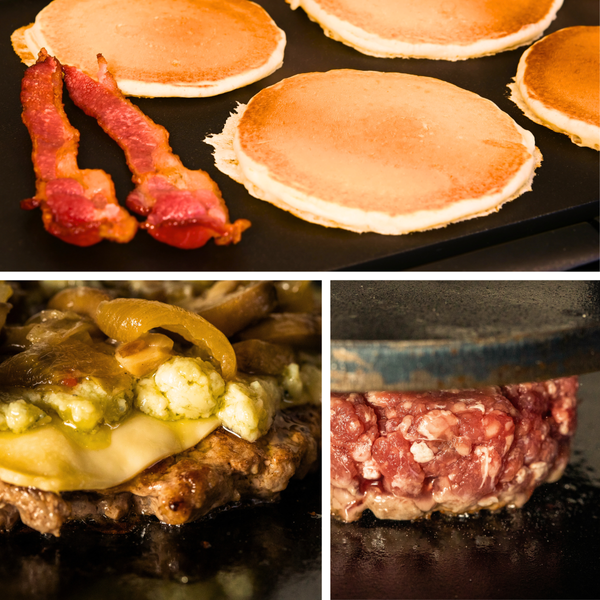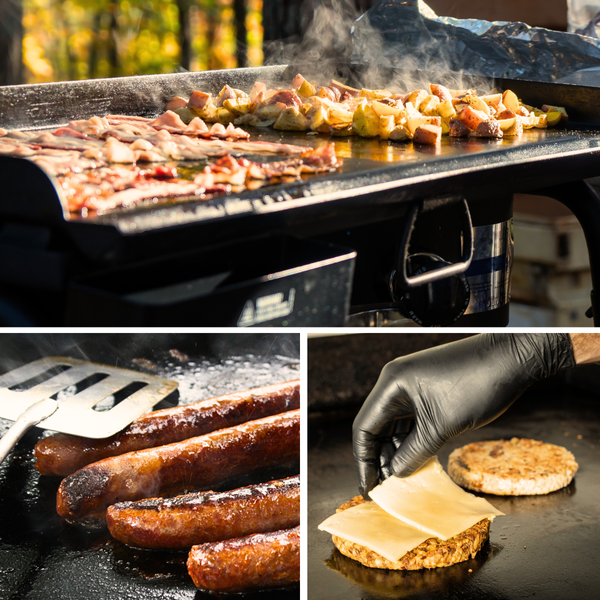Cooking enthusiasts often find themselves at a crossroads when choosing between a griddle and a grill. Both cooking equipment have their unique features and benefits, making them suitable for different types of food and cooking styles. Whether you're a seasoned chef or a backyard cook, understanding the key differences between these two can elevate your cooking game.
Key Takeaways:
- Understand the primary differences between griddle and grill cooking surfaces.
- Learn about the types of foods best suited for each cooking method.
- Discover the pros and cons of griddle and grill to make a better investment for your cooking needs.
What is a Griddle?
A griddle is a flat cooking surface that's typically made from cast iron, steel, or aluminum. Most griddles are powered by electricity or gas, providing an even heat distribution across the flat surface. Griddle cooking is versatile, allowing you to cook a variety of breakfast items like pancakes, fried eggs, and hash browns, as well as other foods cooked without the need for the charred flavor that grills offer.
The Appeal of Griddle Cooking
The smooth, flat surface of a griddle makes it ideal for cooking items that would otherwise fall through traditional grill grates. Griddles are also known for their easier cleanup, as the flat top doesn't allow food to stick in hard-to-reach places. Additionally, the lack of an open flame means there's less chance of flare-ups, making it a safer option for indoor cooking or on a crowded patio.
What is a Grill?
Grills, on the other hand, are cooking equipment that uses direct heat from gas, charcoal, or wood to cook food. The metal grates of a grill provide that distinctive charred flavor and grill marks that are synonymous with outdoor cooking. Grills can reach high heat and are perfect for cooking steaks, hot dogs, and other meats that benefit from the smoky flavor imparted by an open flame.
The Charm of Grilling
Grilling is a form of open fire cooking that's been around for centuries. The direct flame and dry heat create a unique taste and texture, especially for meat. Grills are often the go-to for an authentic outdoor grill experience, and the variety of grilling tools available makes it a versatile option for those who enjoy the process of tending to their food over a natural gas or charcoal grill.
Griddle vs Grill: Cooking Surfaces
The flat cooking surface of a griddle is in stark contrast to the metal grates of a grill. This difference significantly affects the cooking process and the types of foods that can be cooked effectively. Griddle surfaces are excellent for foods that require a solid base, whereas grill grates are ideal for foods that benefit from direct heat and high heat.
Griddle vs Grill: Heat Source and Distribution
Griddles typically use a consistent heat source that spreads evenly across the flat surface, making it easier to manage the cooking temperature. Grills, whether they are gas grills or charcoal grills, rely on a heat source that can create hot spots and require more attention to prevent burning or undercooking.
Outdoor Cooking: Griddle or a Grill?
When it comes to outdoor cooking, the choice between a griddle and a grill often comes down to the type of food you're planning to cook. An outdoor grill is perfect for traditional BBQ items like steaks and hot dogs, while a griddle is better suited for cooking breakfast items or foods that need a flat surface, like fried eggs or pancakes.
Indoor Cooking: Griddle and a Grill
Indoors, a griddle can be a more convenient option due to its contained cooking area and easier cleanup. However, some cooking enthusiasts opt for insert griddles that fit over their traditional grill, combining the benefits of both a grill and a griddle. This allows for different cooking surfaces to be used in one compact kitchen space.
The Versatility of Griddles
Griddles are not just for breakfast items; they can be used to cook a wide range of foods. From grilled cheese sandwiches to stir-fries, the flat top of a griddle provides a versatile cooking surface. Tabletop griddles and freestanding griddles are available to suit different cooking needs and space constraints.
Grills: More Than Just Meat
While grills are often associated with meat, they can be used to cook a variety of other foods. Vegetables, pizza, and even some desserts can be cooked on a grill, providing that unique grilled food taste. The key is to use the right grilling tools and techniques to achieve the desired results.
Griddle Makes for Easier Cleanup
One of the significant differences between griddles and grills is the cleanup process. Griddles often have a grease management system that makes it less time-consuming to clean after cooking. The flat surface also means there are no nooks and crannies for food particles to hide, making it a more hygienic option.
Grills Offer Authentic Flavor
For those who crave the smoky, charred flavor that only a traditional grill can provide, there's no substitute. The direct flame and open flame cooking process impart a taste that's difficult to replicate on a griddle. This is one of the primary differences that draw people to choose a grill over a griddle.
Additional Features: Griddle vs Grill
Many griddles come with additional features like side shelves, warming trays, and even the ability to convert into a grill. These features can make a griddle a more versatile and better investment for some. Grills, however, often have their own set of additional features, such as side burners, rotisseries, and smoker boxes.
Griddle Cooking Techniques
Cooking on a griddle might seem straightforward, but there's an art to mastering the griddle surface. Whether you're using a traditional cast iron pan or a modern Blackstone griddle, the techniques you employ can make a significant difference. For instance, the even heat distribution of a griddle is perfect for achieving a golden-brown sear on pancakes, French toast, or even smash burgers. The key is to preheat the griddle to the right temperature before adding your food, ensuring a consistent cook throughout.
Moreover, cooking on a griddle allows for a bit of showmanship in the kitchen. Think of the teppanyaki chefs flipping and chopping with flair—while you might not be performing for a crowd, the spacious surface of a griddle gives you ample room to maneuver and manage multiple food items at once. This is especially useful for breakfast spreads where eggs, bacon, and hash browns can all sizzle side by side, saving time and reducing the need for multiple pans.
Grills and Griddles: Maintenance Matters
When it comes to maintenance, both grills and griddles require attention, but the nature of their upkeep differs. Grills often involve more time-consuming cleaning due to their grate design, where food particles and grease can accumulate in hard-to-reach places. A grill brush is a must-have tool for any grill enthusiast, helping to scrape off charred bits and maintain a clean cooking surface. Regularly checking for rust and applying a light coat of oil after cleaning can also prolong the life of your grill.
On the other hand, a griddle surface, particularly a cast iron pan or a Blackstone griddle, demands a different approach. Seasoning the surface is crucial to both protect the metal and create a non-stick layer for easier cooking and cleaning. After use, letting the griddle cool down, followed by wiping it with a cloth or paper towel to remove excess oil and food residue, is usually sufficient. For a deeper clean, warm water and a gentle scrub will do the trick, but remember to dry and oil the surface afterward to prevent rust.
Making the Right Choice for Your Cooking Style
Choosing between a griddle and a grill ultimately comes down to your cooking style and preferences. If you value versatility and easier cleanup, a griddle might be the way to go. If you prefer the traditional taste of grilled food and enjoy the process of cooking over an open flame, then a grill is likely a better fit.
Summary
The debate of griddle vs grill is one that revolves around different cooking surfaces, heat sources, and the types of foods cooked. Griddles offer a flat cooking surface with even heat distribution, making them ideal for a variety of foods and easier cleanup. Grills provide a high heat, direct flame cooking experience that's perfect for achieving a smoky flavor in meats and other grilled food. Both cooking equipment have their own set of additional features and benefits, and the choice between a griddle or a grill depends on personal cooking preferences and the desired outcome.
FAQ Section
Q: Can I cook the same foods on a griddle that I can on a grill?
A: While there is some overlap, certain foods are better suited for one over the other. For example, foods that require a flat surface, like pancakes or fried eggs, are best cooked on a griddle, while meats that benefit from a smoky, charred flavor are ideal for a grill.
Q: Is it possible to have both a grill and a griddle in one unit?
A: Yes, some cooking equipment comes with the ability to function as both a grill and a griddle. There are also insert griddles available that can be placed over grill grates, offering the best of both worlds.
Q: Which is easier to clean, a griddle or a grill?
A: Generally, a griddle is easier to clean due to its flat surface and often integrated grease management system. Grills have grates that can trap food particles and require more effort to scrub clean.


